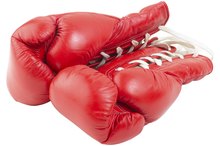The Best Gloves for Poor Circulation
What to Look For
It's not unusual for anyone to have cold hands in the wintertime, but getting cold hands even when it's not that cold out can be a sign of poor circulation--or a more severe condition. Select gloves that are snug, but not too tight. If choosing gloves for indoor use, find a lightweight cotton or cotton blend glove that is breathable and will allow you to perform basic functions while wearing it. A lightweight fingerless glove will also help you keep your hands warm while allowing you to perform almost any function. Gloves with a compression feature often improve circulation and warmth by using the heat from your skin. For outdoors, a water-resistant or waterproof glove with a polar fleece or shearling lining will keep your hands warm. You may want to wear a cotton or Lycra liner underneath winter gloves or mittens for added protection. Mittens in general offer more overall warmth than gloves, since the whole hand (except the thumb) combines within the mitten to give off heat. However, it is difficult to perform many tasks with mittens on, so gloves may be more practical.
- It's not unusual for anyone to have cold hands in the wintertime, but getting cold hands even when It's not that cold out can be a sign of poor circulation--or a more severe condition.
- For outdoors, a water-resistant or waterproof glove with a polar fleece or shearling lining will keep your hands warm.
Common Pitfalls
The History of Soccer Goalie Gloves
Learn More
The biggest mistake those who purchase gloves for poor circulation make is buying a glove that doesn't fit properly. Your glove should be snug, without "wiggle" room, but not too tight. Pay particular attention to the wrist area. If the wrist is too tight, this could cause further circulation problems later. Winter gloves, though, need to have a little room in them since they work by trapping a layer of air in your glove. Your hand warms up this layer, heating up your glove. When looking for gloves, don't just look for style or warmth. If you will be wearing your gloves a lot, you must also look for function. Don't buy your gloves without trying them on first and trying to perform a few tasks--like zipping up a coat, pushing a button or two and turning a knob on a door.
- The biggest mistake those who purchase gloves for poor circulation make is buying a glove that doesn't fit properly.
Where to Buy
Gloves for those with poor circulation can be purchased at discount stores, pharmacies, department stores and sporting goods stores. Where you purchase your gloves really depends on what type of activities you'll be performing with them on. If you are looking for a specific glove designed for those with arthritis or related symptoms, consult an orthopedist. He may be able to suggest gloves that will work best for your particular condition.
- Gloves for those with poor circulation can be purchased at discount stores, pharmacies, department stores and sporting goods stores.
- If you are looking for a specific glove designed for those with arthritis or related symptoms, consult an orthopedist.
Cost
Cycling Gloves vs. Weight Lifting Gloves
Learn More
Footsmart's Arthritis Gloves, available for $15.99, are highly rated, have open fingertips and are made of lightweight cotton and spandex so that they can be worn indoors. Isotoner's Therapeutic Gloves offer even compression, increasing heat in the hand, and are offered for $17.95 by Amazon.com.
Related Articles
References
- Occupation Health and Safety: A Basic Guide for Selecting the Proper Gloves
- Pain Reliever: IMAK Arthritis Glove
- Nasir SH, Troynikov O, Massy-Westropp N. Therapy gloves for patients with rheumatoid arthritis: a review. Therapeutic Advances in Musculoskeletal Disease. December 2014:226-237. doi:10.1177/1759720X14557474
- Richmond SJ, Gunadasa S, Bland M, MacPherson H. Copper bracelets and magnetic wrist straps for rheumatoid arthritis – analgesic and anti-inflammatory effects: a randomised double-blind placebo controlled crossover trial. PLoS One. 2013;8(9):e71529. doi:10.1371/journal.pone.0071529
Resources
Writer Bio
Michelle Hogan is a writer and the author of 13 books including the 2005 bestselling memoir, "Without a Net: Middle Class and Homeless (With Kids) in America." Hogan studied English at American University and has been writing professionally since 1998. Her work has appeared in "The New York Times," "Redbook," "Family Circle" and many other publications.









